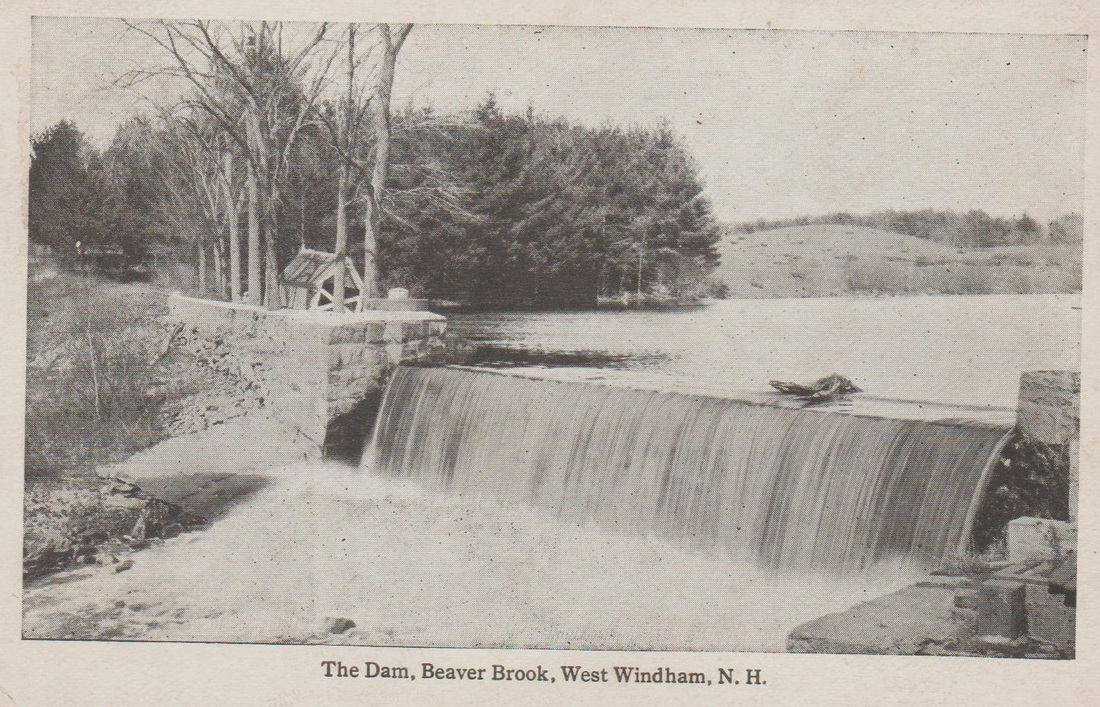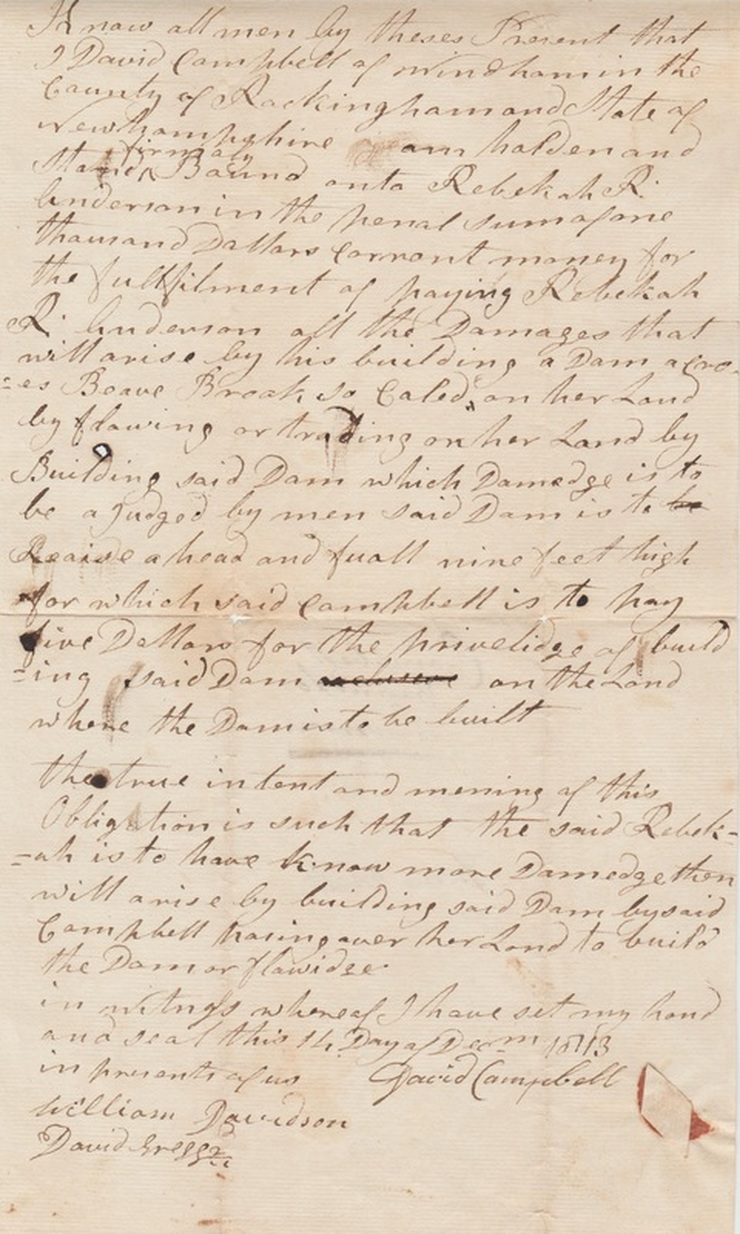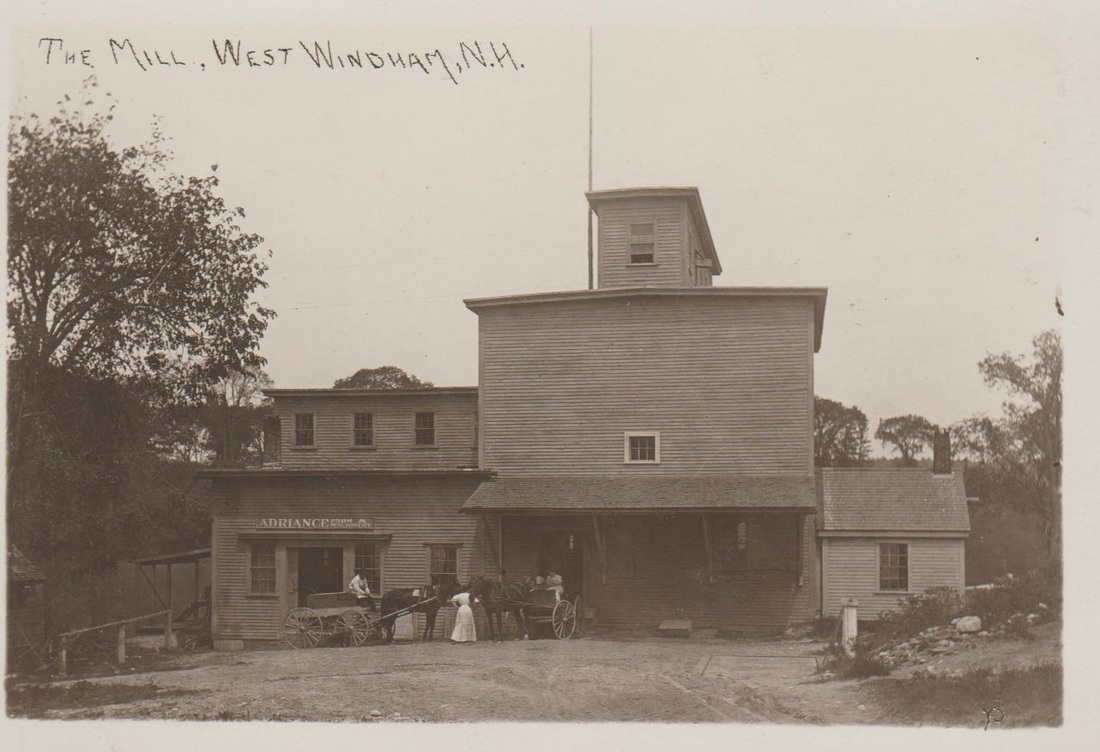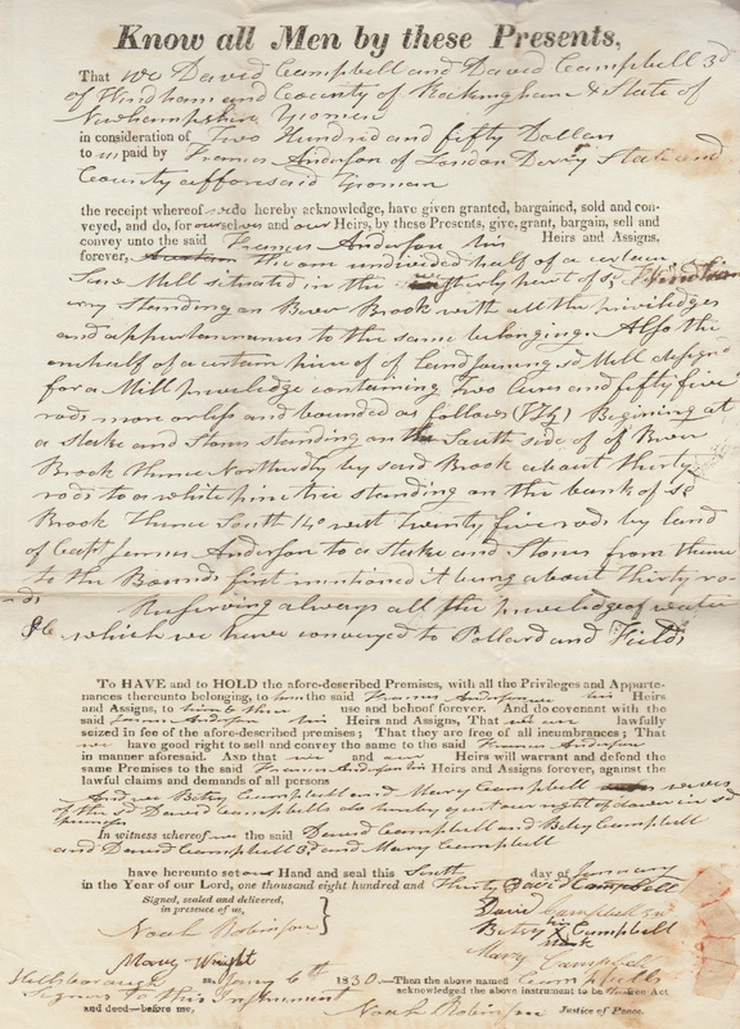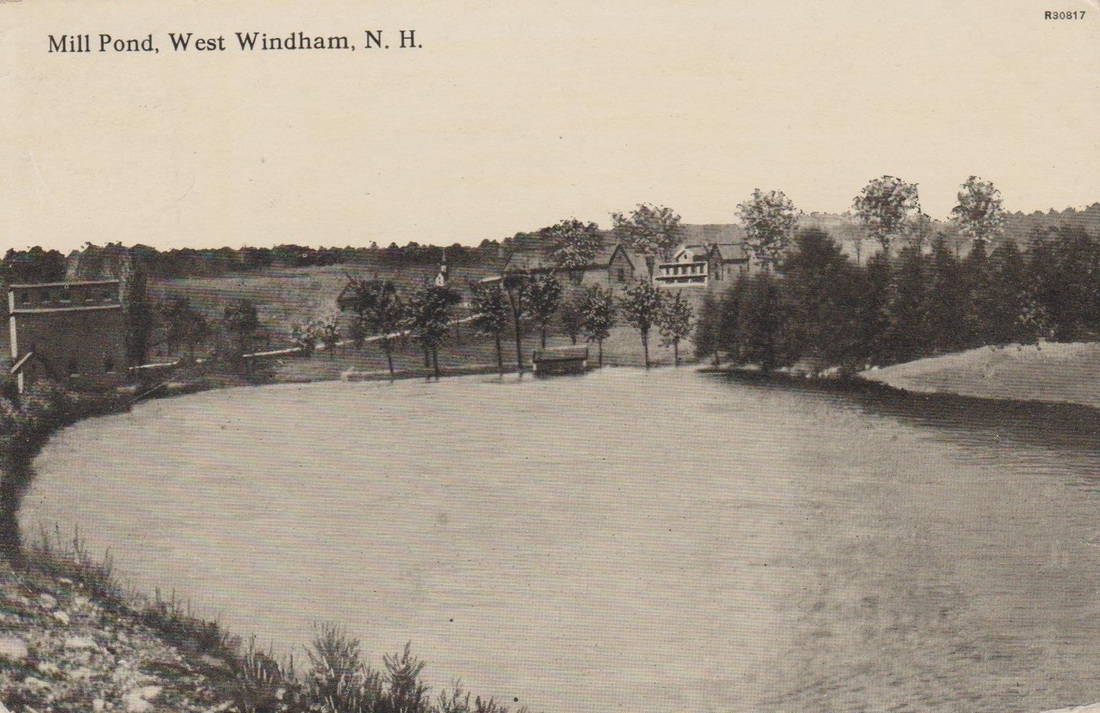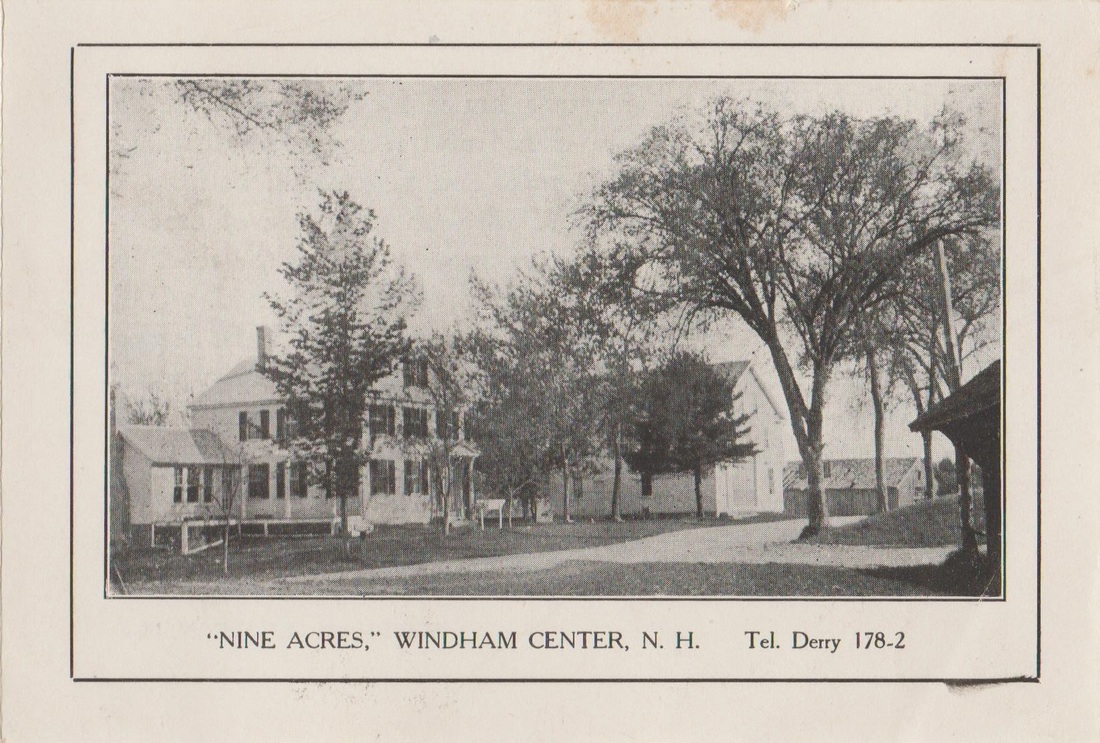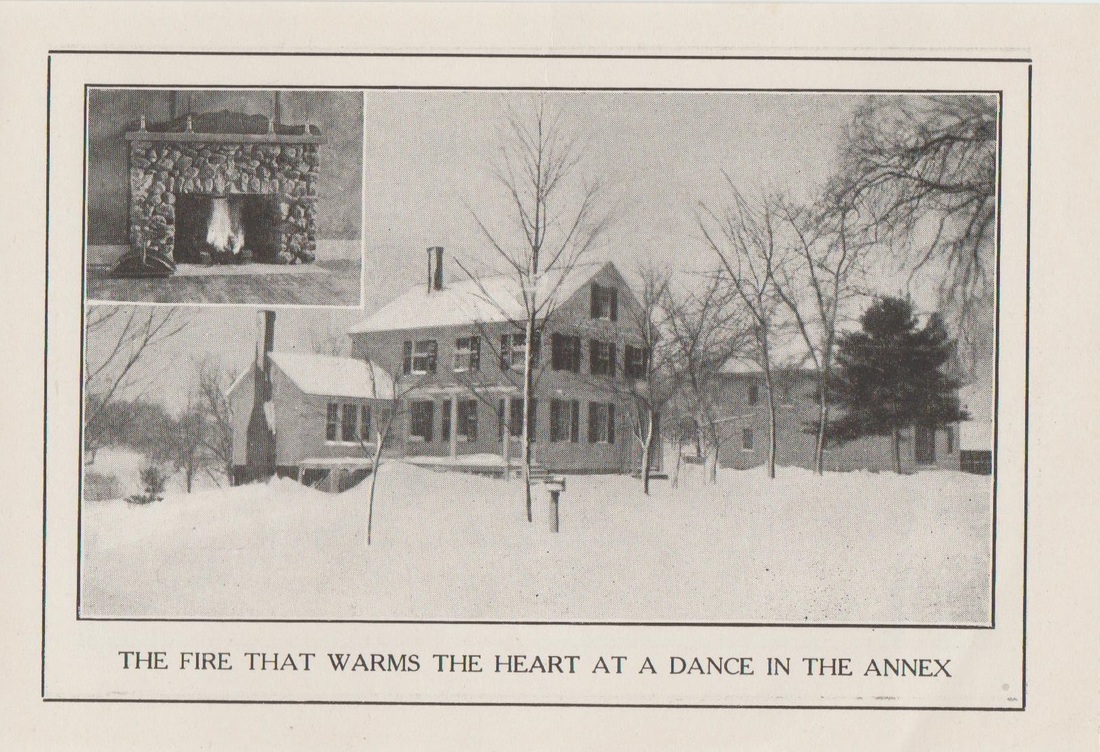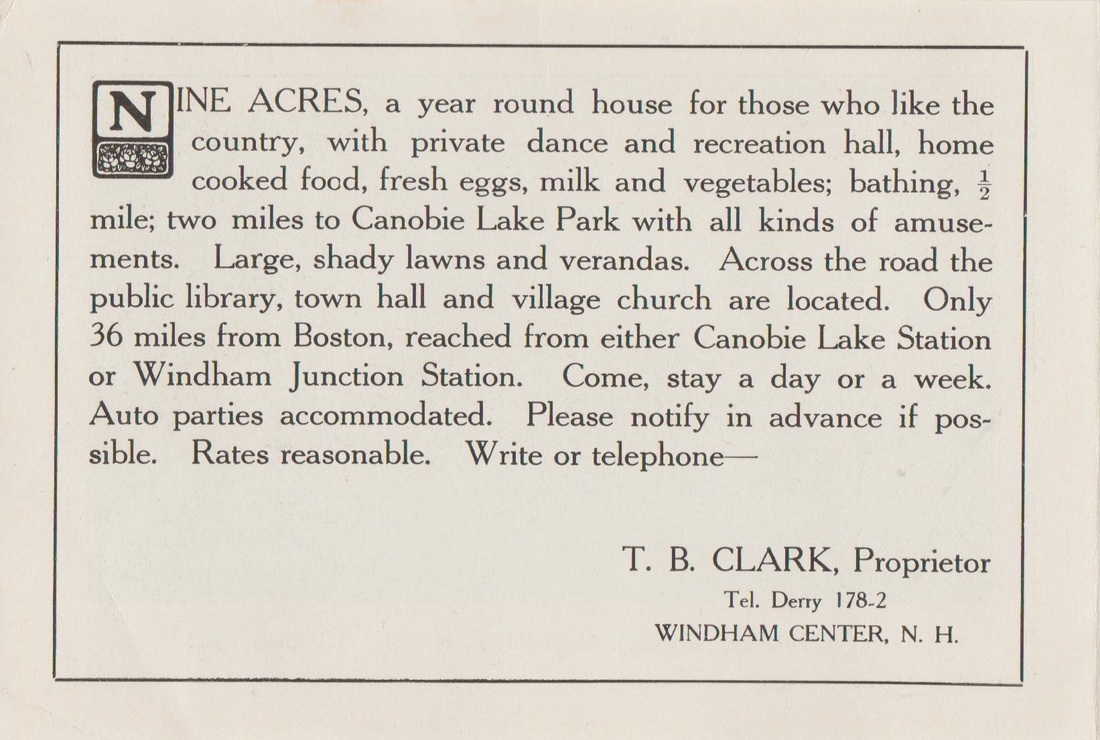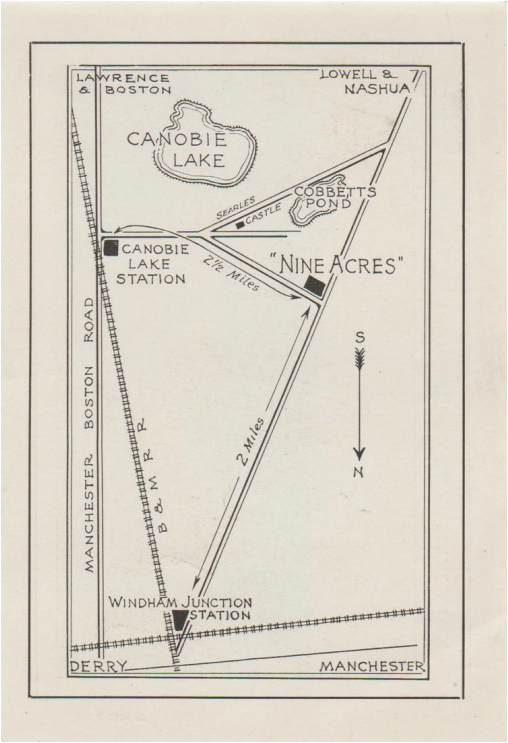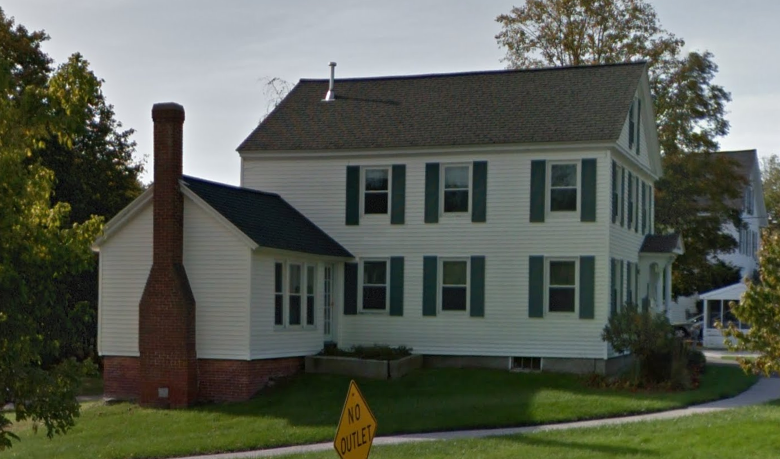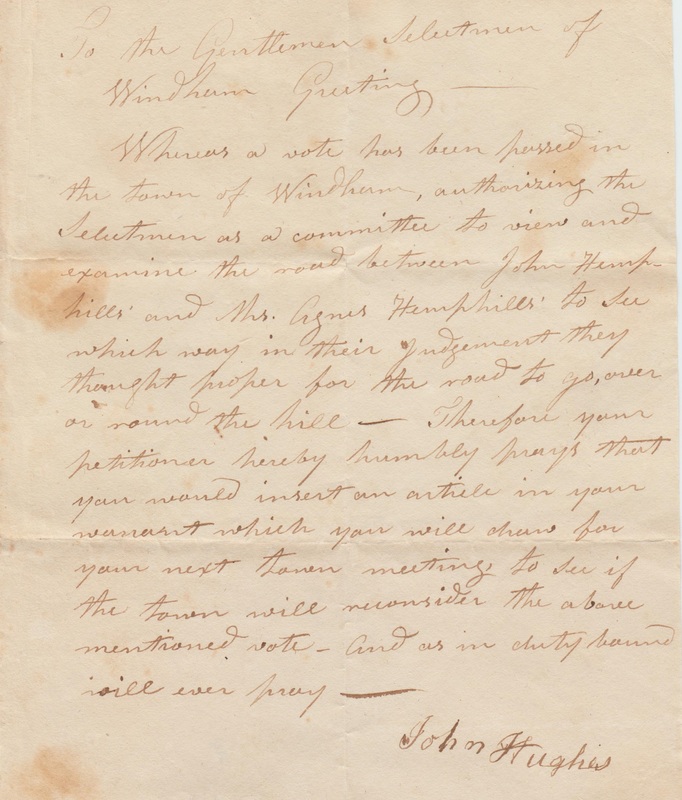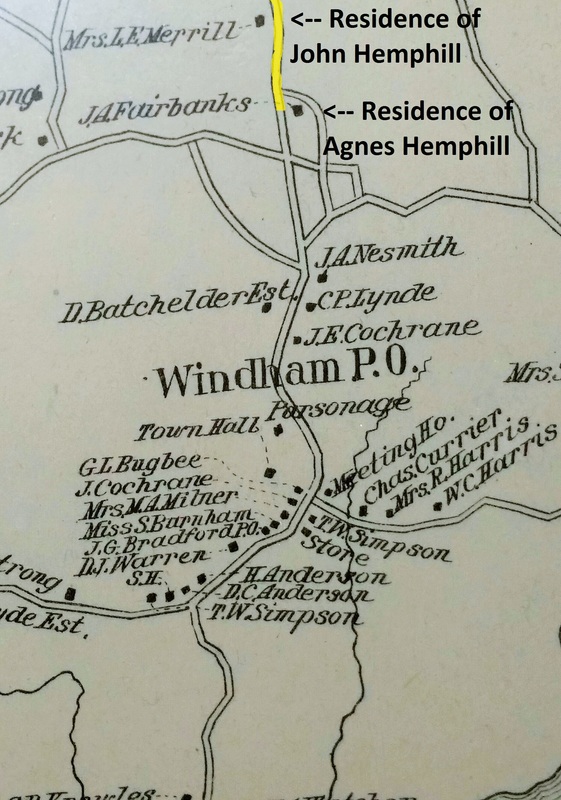Rebekah Anderson was the widow of David Anderson who died some time around 1812; Morrison's record of his death being off by as many as several years. David was born over the border in Londonderry on the homestead that has also been said to be in West Windham (more on that to come in a later story). He and Rebekah (or Rebecca), who was the daughter of Francis and Rebecca Davidson. She died on June 17, 1826 at the age of 45. It is recorded that all their children died to spotted fever save for their son Francis D Anderson who was born in 1807.
|
Although there was a mill built on Beaver Brook in 1752, it was over sixty years before the dam on Beaver Brook (Gaentake in the tongue of the Native Americans), that can be seen today, was constructed. As Morrison writes, "Beaver Brook derives its name from the fact that beavers lived upon the stream". Morrison also marveled at the beaver's, "wonderful skill in constructing dams to brooks, so to control the running waters as to suit their convenience, necessity, or pleasure". The river is an outlet of Beaver Pond, or as the Native Americans referred to it, Tsienneto. The river comes to an end when it flows into the Merrimack River in Lowell, MA. For the sake of brevity, and because most of the story of Beaver Brook was told in a previous story (which can be found by navigating to the past "Featured Stories"), what follows will only be the story of the dam; a relic of Windham's past that has survived to this day. In 1813 David Campbell paid Rebekah Anderson $5 for the privilege of constructing the dam on her land. However, he also agreed to pay up to $1,000 in damages to her property, should there be any, as a result of the dam being built. It was though that damages may result from "flawing or trading" on her land. Before payment of any monies, the damages would have been assessed by a group of men, whose names have been lost to history. The dam was built nine feet high and there is no record of how much, if anything, was paid to Rebekah Anderson by Campbell. Daniel Gregg, one of the witnesses who signed the document above, was born in town on March 11, 1769. He married Nancy Wilson and is recorded as having been, "a fine singer and noted for his piety". There is not much more known about him than what was written by Morrison.
Rebekah Anderson was the widow of David Anderson who died some time around 1812; Morrison's record of his death being off by as many as several years. David was born over the border in Londonderry on the homestead that has also been said to be in West Windham (more on that to come in a later story). He and Rebekah (or Rebecca), who was the daughter of Francis and Rebecca Davidson. She died on June 17, 1826 at the age of 45. It is recorded that all their children died to spotted fever save for their son Francis D Anderson who was born in 1807.
0 Comments
According to Leonard Morrison, the first mill of any kind ever built in town was Henry Campbell's saw mill that was built at Beaver Brook in West Windham around 1750. Morrison also wrote that, "the erection of saw mills was a very important event to the first residents, and it was encouraged by public favor, and often times by freeing such property from taxation. By their erection the whole settlement was greatly benefited, as the settlers could readily convert their lumber, of which there was an unlimited supply, into boards, plank, joist, timber, and all manner of building material, thus enabling them to displace their rude habitations of logs, and build substantial frame houses in their stead". When Morrison wrote of Windham's history in 1883 he concluded his terse entry of the town's early saw mills by noting, "few people of the present think of or appreciate the civilizing influence of a good saw mill in a new settlement". As such a sentiment likely holds true in the present day, it is necessary to tell the story of the mills that have been located at Beaver Brook. The mill that Henry Campbell built remained in the Campbell family for several generations. One of the owners of the mill was David Campbell who was born in Windham around 1757. He married Elizabeth Dickey and in 1784 purchased one hundred and forty acres of land in West Windham from Hugh and Mary Graham. Much of the lumber used in the construction of Windham's early homes was undoubtedly cut and prepared at his family's saw mill. David was one of the several men from Windham to serve in the Revolutionary War and he has the notable distinction of being "Windham's Last Soldier of the Revolution", a name given to him by Leonard Morrison. Morrison gives a short anecdote about Campbell and the Revolutionary War, which is as follows: "The fall of Cornwallis, Oct. 19, 1781, was substantially the closing military act of the war. A few skirmishes alone indicated that the war was not at an end. But the Continental Congress very prudently kept the ranks of the regular army filled. Windham was short of one man to fill her quota on the last of July. Then it was that one who had repeatedly enlisted, and served his country in many campaigns, been wounded in her service July 30, 1782, and received a bounty of £20. This was David Campbell, Windham's last soldier in the war of the Revolution." David Campbell died on March 11, 1830, shortly after he sold half an interest in the saw mill at Beaver Brook to Francis Anderson for $250. David Campbell III, referred to as such because even though he was only second in direct lineage with the name there was another related David Campbell in town at the time, was the son of the elder David Campbell. Born on August 24, 1796, he succeeded his father on the farm in West Windham. He married Mary Marden who passed away on February 3, 1837 at the age of 36. David married her sister, Mehitable, shortly after on September 14, 1837. Mehitable was widowed when David passed away from consumption on June 5, 1839. She went on to marry Enoch Johnson a few years later. The purchaser of the half interest in the mill, Francis D Anderson, was born in Londonderry in 1807. He married Jane Davidson of Windham, who was recorded as having been a, "modest, gentle, and refined lady, who was greatly esteemed for excellent qualities of mind and heart". Francis was likewise admired and was noted as having, "possessed excellent judgement, strong common-sense, and good executive ability". He died on March 6, 1866, and his wife outlived him passing away on March 13, 1880. The story of Beaver Brook does not end when it leaves the ownership of the Campbell family. In 1836 John A and A R Burnham erected a three story, 60' x 40' factory on the site. It is recorded that, "they put in one set of machinery, and manufactured about 4,000 yards of satinet a month". The material produced would have been been finely woven fabric composed mostly, or completely, of wool and had a finish similar to that of silk. The depression of 1837 caused the business to fail and the machinery and real estate was sold. The building was purchased by an F G Stark. Morrison writes that, "in 1845, Ira Hersey, of Foxboro', Mass, bought this property and manufactured worsted yarn". However, his business also proved to be unsuccessful. The mill was then purchased by Judge Crosby of Lowell, MA and Edward Titcomb of Newburyport, MA. Titcomb ran the factory and produced cotton mattresses. In 1857 the mill was destroyed by fire, which also burned $600 worth of lumber that was nearby. The use of the water at Beaver Brook was left unused until the late 19th century when Walter Drucker made use of the mill, but the mill eventually fell out of use as time progressed.
In the first quarter of the twentieth century, there were several boarding houses in town to accommodate the summer vacationers who would come to town for Cobbett's Pond, Canobie Lake Park, and to get away from the local cities. The history of boarding houses in town is noted in "Rural Oasis". According to the book, "boarding houses specialized in either taking workers or vacationers". The working boarders would pay for a portion, or all, of their stay in farm labor, and this was no doubt a way to alleviate the work of the local farm hands. However, "boarding houses which took vacationers were the most popular. These farms required little or no work of their guests who had come to the country to relax and seek some fun. Many of the people who later built camps on Cobbett's Pond were first introduced to the area while boarding in Windham". It is recorded that the boarding houses in town charged an average of just over a dollar a day. One of such boarding houses was Nine Acres, which was ran by T B Clark at Windham Center. The building was located directly across from the Nesmith Library, then housed in the Armstrong Building, and the Town Hall. Nine Acres was built in the mid 19th century by Robert Bartley, who also purchased the original Nesmith store next door to the home, after the original building burned in around 1856. Thomas W Simpson moved to the home in the mid 1860s after his family homestead burned to the ground. At that time he built a gristmill and sawmill, as well as a farm. He is noted in Morrison's "History of Windham" as being, "active in town affairs, and [serving] acceptably as moderator for nine successive years from 1853 to 1861 inclusive". He also served as selectman for several years during the same period. Thomas married Sarah Clark on January 5, 1854 and the couple had several children together. Thomas Simpson owned the building that became Nine Acres until at least the 1890s when he was recorded on a map as still residing there and owning another building nearby. However, between that time and the 1920s, the property of the home that became Nine Acres came into the possession of T B Clark, who made the home a boarding house. The property was open to guests year round and offered, "private dance and recreation hall, home cooked food, fresh eggs, milk and vegetables". It is noted on a period brochure that Cobbett's Pond was available for "bathing" one half mile away, and Canobie Lake Park was a short two miles away. A map was conveniently placed on the back of the brochure in order to illustrate the distances between Nine Acres and local attractions, as well as to show prospective vacationers which rail lines to take into town. The building once christened "Nine Acres" is still standing in town and is located directly next to Windham's Senior Center. Some of the original features of the building, including the side hall and it's chimney, are still intact.
In about 1820 it was deemed necessary to construct a road, where North Lowell Road is now, between the residences of John Hemphill and Mrs. Agnes Hemphill. The dilemma was whether or not the road should go, "over or round the hill". John Hemphill was born in Windham on June 10, 1766 to parents, Jane and Robert Hemphill. He is recorded in Morrison's "History of Windham" as having, "possessed in a marked degree all the characteristics of the Scotch Race. His speech had the deep Scotch brogue. He was a fine bass singer; his voice was strong, rich, and melodious, and could be distinctly heard in a large choir; was a good violinist". On February 14, 1797, he married Lydia Merrill who was born in town on August 17, 1770. In 1809, John was listed as being on the committee for inspecting Windham's schools. John died on August 26, 1838 at the age of 82, and his wife outlived him by several years, passing away on November 8, 1856 at the age of 86. Agnes Hemphill was the widow of Captain Nathaniel Hemphill, who was very involved in town in the last quarter of the 18th century. Nathaniel was born on May 11, 1737 in Windham. His wife, Agnes, was born on July 9, 1746, a daughter of Robert Park. They were married on December 28, 1764, and had eighteen children together. According to Leonard Morrison it was, "the largest family ever raised in town". Morrison also noted that in aggregate the ages of the children at the time of death would be over eleven hundred years. Nathaniel was a town selectman for several years and a moderator of the annual town meetings. Hemphill was also one of the few individuals in town to own slaves. It is recorded in Morrison's "History of Windham" that, "as his family increased, he and his good wife saw the necessity of having more household assistance, so they went to Boston and purchased a colored girl named Dinah, paying forty dollars for her, which was probably cheap, and brought her home". Prior to Dinah being released upon the adoption of the state constitution in 1784, she was a, "faithful friend and servant. She assisted much in taking charge of the children. Seating herself in a chair with a large dish in her lap, which held the broth or pudding, with the little ones gathered in a circle around her, she would ladle out to each the appointed share". Agnes Hemphill was responsible for going in to town and purchasing articles needed by the family, but it is noted on, "one occasion the articles for each were mentioned, but Dinah's portion was not alluded to, though it was the intention to procure articles for her. She was deeply grieved to be thus neglected, and exclaimed, 'Me nothing! me nothing!'[.] Mrs Hemphill went to market, purchased the several articles, and Dinah's too; but when she returned, Dinah had departed, to return no more as a member of the household". Morrison also recorded that she went to Dunstable, where she found "some of her own people", and was married.
Nathaniel Hemphill earned his title of captain for his work with the New Hampshire Training Band during the Revolutionary War. He died in 1796 to lung fever. According to Morrison, Agnes was a woman, "with great mental strength and physical endurance, she managed, unaided, the affairs of her large family for eighteen years". Morrison also relates an interesting story about Agnes and her daughters: each of her daughters had a spinning wheel on which they would spin linen into thread, all together in one room that also served as the family's kitchen. They would spent about three months accumulating "webs of cloth", which would be sold in Salem, MA by Agnes who would ride, alone, on horseback at 2 AM as it took almost a full day to arrive at the market. The trip would take an additional two days; one day being allotted for trading and another day to return home. She died on July 3, 1838. John Hughes, the writer of the document, is recorded by Morrison as having been, "a prudent and careful man in his business...[and] was a kind, accommodating neighbor and a good citizen". Now back to the story of the road. The road that was constructed according the to the document would have been a stretch of road that is now North Lowell Road. The map below is a portion of an 1890s map of Windham. The yellow portion of the road indicates approximately where the road would have been built. |
AuthorDerek Saffie is an avid Windham historian who enjoys researching and sharing his collection with all those interested in the history of the New England town. Archives
November 2019
Categories
All
|
